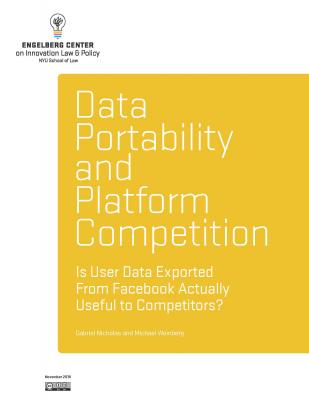
Announcing Data Portability and Platform Competition - Is User Data Exported From Facebook Actually Useful to Competitors?
This post originally appeared on the Engelberg Center blog.
Read More...Announcing the Innovation Policy Colloquium Podcast
This post originally appeared on the Engelberg Center blog.
Read More...The Greatest Simulated Legal Open Mic Night of the Season - Guaranteed
Lego's IP Grab Bag
Lego recently sent a series of takedowns to websites that host 3D printable models, including MyMiniFactory.* It looks like some of Lego’s claims are legitimate, while others appear to be less so. Taken together, the claims highlight the complicated ways in which IP attaches to 3D printable models, and the ways in which various legal ambiguities can allow a large company like Lego to try and control behavior that is probably not legally within its right to control.
Read More...

